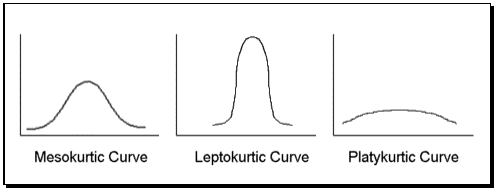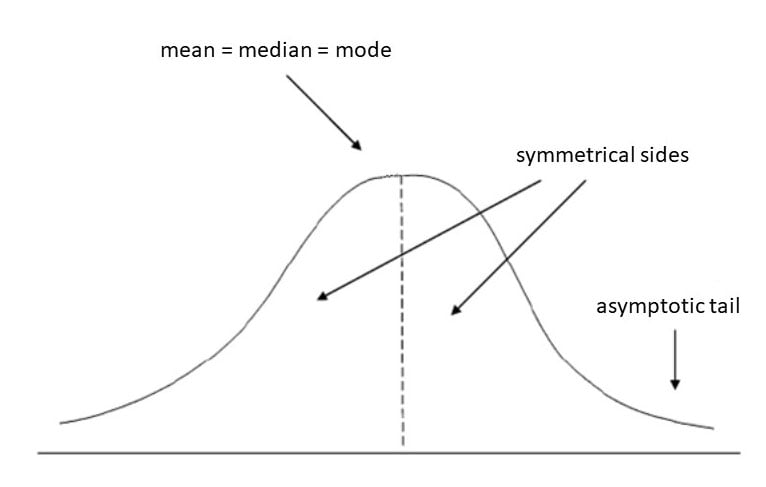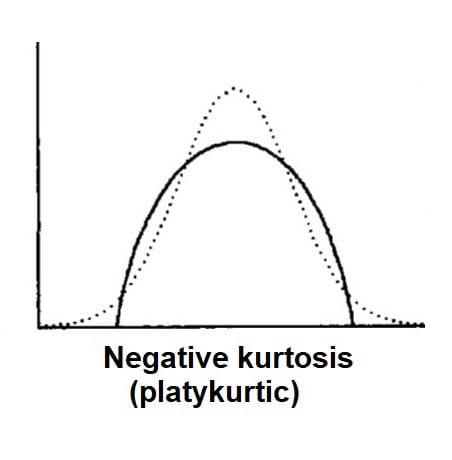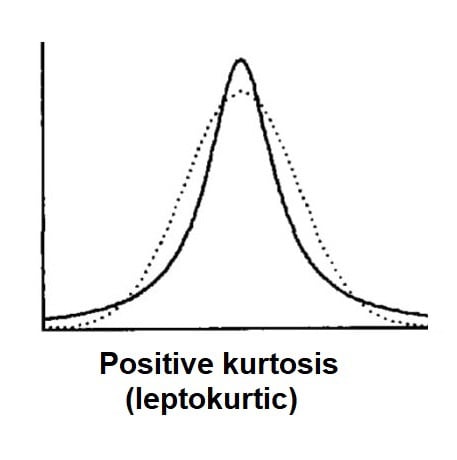On This Page:
The peak is the tallest part of the distribution, and the tails are the ends of the distribution.
There are three types of kurtosis: mesokurtic, leptokurtic, and platykurtic.

- Mesokurtic: Distributions that are moderate in breadth and curves with a medium peaked height.
- Leptokurtic: More values in the distribution tails and more values close to the mean (i.e., sharply peaked with heavy tails)
- Platykurtic: Fewer values in the tails and fewer values close to the mean (i.e., the curve has a flat peak and has more dispersed scores with lighter tails).
Normal kurtosis
When kurtosis is equal to 3, the distribution is mesokurtic.
This means the kurtosis is the same as the normal distribution; it is mesokurtic (medium peak).
The kurtosis of a mesokurtic distribution is neither high nor low; rather, it is considered to be a baseline for the two other classifications.

When kurtosis is zero
When kurtosis is equal to 0, the distribution is platykurtic.
A platykurtic distribution is flatter (less peaked) when compared with the normal distribution, with fewer values in its shorter (i.e., lighter and thinner) tails.

Negative kurtosis
Negative excess values of kurtosis (<3) indicate that the distribution is flat and has thin tails. Platykurtic distributions have negative kurtosis values.
A platykurtic distribution is flatter (less peaked) when compared with the normal distribution, with fewer values in its shorter (i.e., lighter and thinner) tails.

Positive kurtosis
Positive excess values of kurtosis (> 3) indicate that distribution is peaked and possesses thick tails. Leptokurtic distributions have positive kurtosis values.
A leptokurtic distribution has a higher peak (thin bell) and taller (i.e., fatter and heavy) tails than a normal distribution.

An extreme positive kurtosis indicates a distribution where more of the values are located in the tails of the distribution rather than around the mean.

